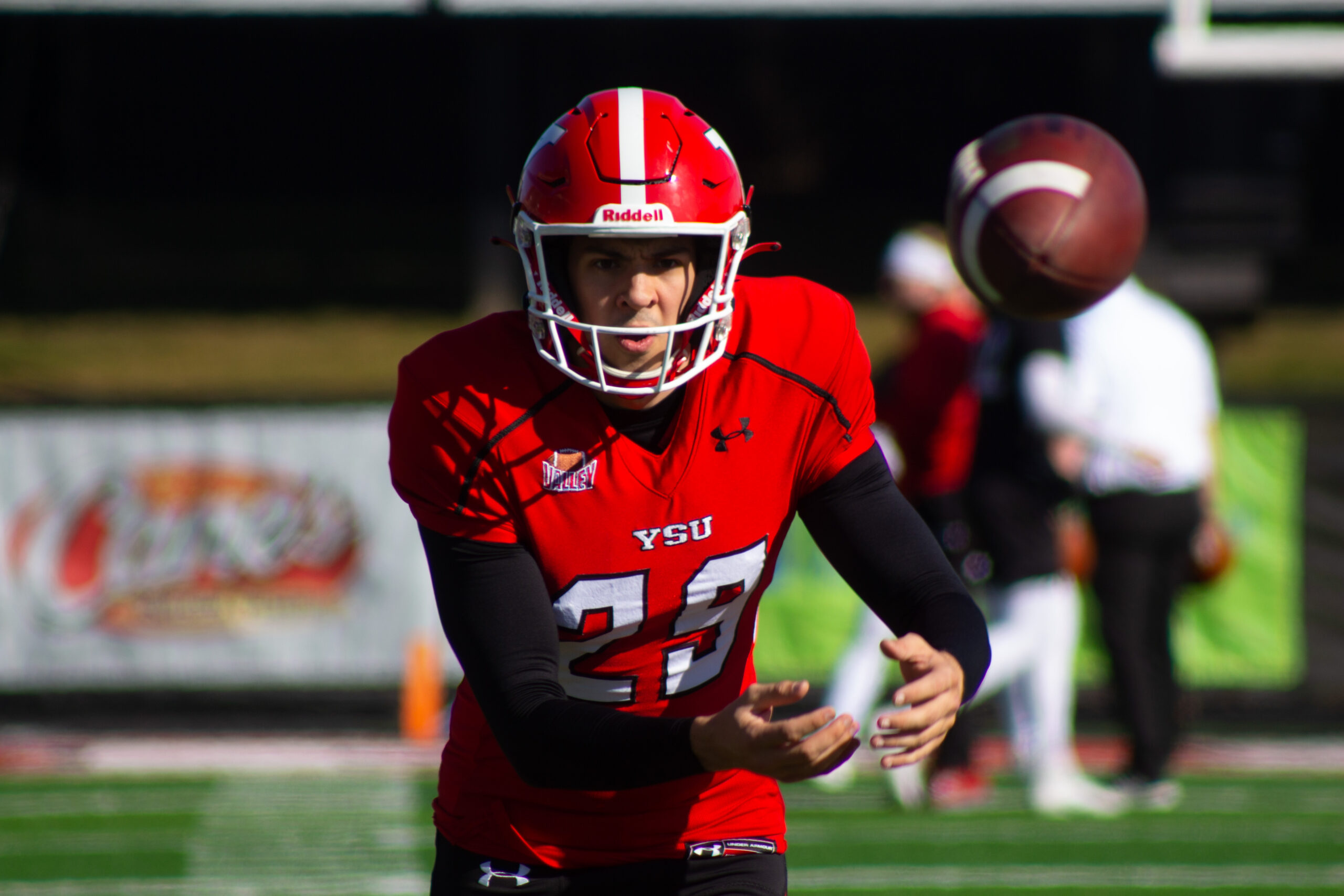By Yousof Hamza
Paddy Lynch was an Australian football player, but since arriving at Youngstown State University, he transitioned to an American football punter.
Lynch is from Emerald, Queensland, Australia, and arrived in Youngstown in January his freshman year to study professional communication. He is a product of Prokick Australia, an organization that trains Australian football players to play American football.
“I was looking at a few other schools and was really impressed with the caliber of the Missouri Valley Conference,” Lynch said. “I got talking with coach [Doug] Phillips and [assistant] coach [Evan] Harvey, and they both seem like coaches you want to win for.”
Special teams coach Evan Harvey said Lynch is transitioning smoothly.
“He’s made so much growth since he’s come here because of how serious he takes it – how competitive he is,” Harvey said.
Lynch said the transition has been seamless from kicking end-over-end to traditional spiral kicks. While the kicking styles are different, he said he hopes to have the traditional punt dialed in for the fall.
“Nick DeSalvo and Ryan Teminsky give me a lot of pointers, and I’m still in contact with the coaches at Prokick Australia, and they really help me out with that as well,” Lynch said.
Placekicker Colten McFadden said it’s been fun teaching Lynch about American football.
“In the beginning, he didn’t quite understand how everything worked. He didn’t quite know when it was time to punt or how many quarters were in a game. But he picked things up quick and has done a great job in his role,” McFadden said.
According to its website, Prokick Australia was founded in 2007 and has helped save $1.9 million in education fees by helping players get 75 scholarships or professional contracts. It has also produced 17 All-American football players, including San Francisco 49ers punter Mitch Wishnowsky.
Lynch said American football has seen an increased interest in Australia, in part due to Prokick Australia.
Australian punters are known for their rollout kicks, which are crucial for Australian football. Players must run and kick the ball on the move to other players or through posts to score.
“If you can’t kick in [Australian football], you can’t really play at all,” Lynch said.
There are two other methods of moving the ball in Australian football. The first is a player running and bouncing the ball back to them every 16 yards, and the second is to punch the ball out of their hand to another player.
Another feature of Australian football is players using each other as a springboard to catch balls.


